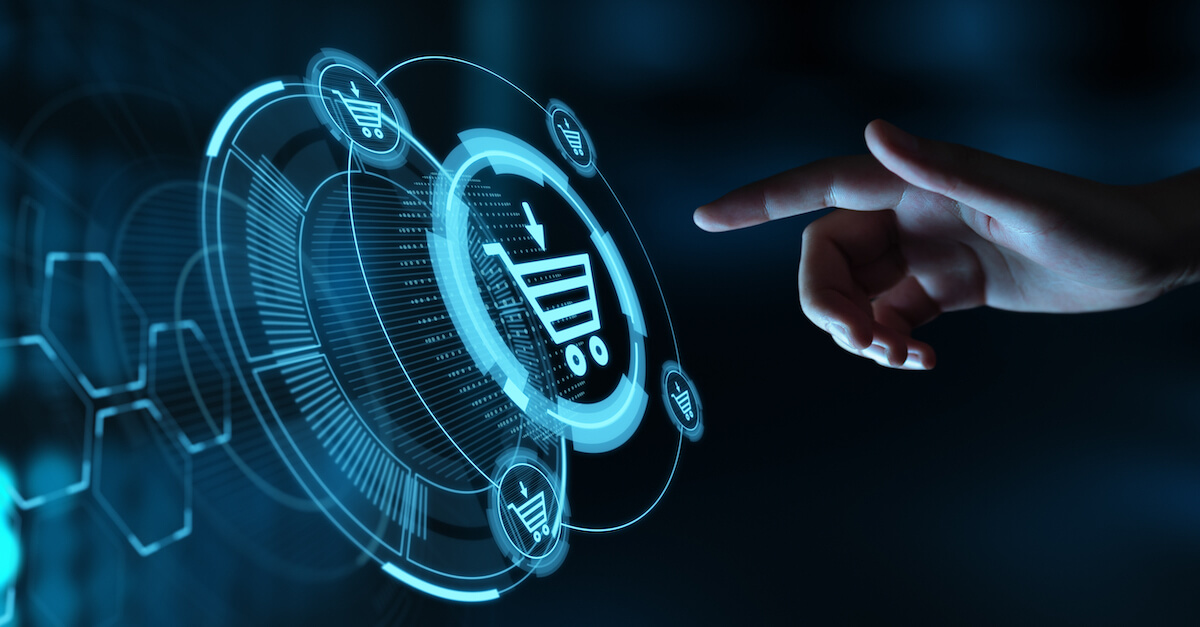April 21, 2023
How to Stay Ahead of Consumer Behavior Trends with AI
By Liza Colburn

Consumer behavior trends often change quickly. There are year-to-year swings in consumer sentiments that impact discretionary spending, debt, economic security, and more due to large economic shifts and other factors. Accenture describes the Reimagined Consumer with purchase motivations beyond price or quality. Not only do consumer behavior trends change often, but consumer motivations for engaging with or buying from a brand also change as customer profiles change.
Enterprise companies used to rely on data and consumer behavior trends from the prior year in order to forecast inventory, new offers, marketing strategies, staffing needs, metrics, expectations for future holiday seasons, credit card adoption/spending, travel trends, etc. These available insights at least gave brands a baseline from which to make decisions, and they were often in the ballpark. That’s no longer the case.
Companies can’t rely only on last year’s data to make future marketing or business decisions. Doing so can cost your company money. How do we know? Because we can see it in our customers’ marketing campaign data. Let’s explore what we see and how enterprise brands can use AI to keep up with ever-changing consumer behavior trends.
New customer profiles and cultural factors are transforming consumer behavior trends
Economic factors consistently affect consumer confidence and change consumer behaviors significantly. But, it’s not just about the economy. In the past few years, we’ve seen major cultural shifts that have also transformed consumer behavior trends, consumer sentiments, spending habits, and digital marketing campaign performance. New consumer profiles have also emerged as the demographics of US-based consumers are shifting.
Let’s explore four of these factors.
1. Inclusivity and diversity
Over the past few years, many consumers have moved away from exclusivity and rigid standards of beauty in favor of inclusivity, diversity, body positivity, fair labor practices, and mental health. Gen Z is leading the way in many of these shifts which shows that there is even more change to come. The Persado Content Intelligence team has seen these cultural changes reflected in customers’ digital campaign performance. “New year, new you” was the worst-performing phrase in retail digital marketing campaigns for seven years running across multiple channels, including email, social media, and push notifications. The need to change or improve is outdated and doesn’t garner engagement with today’s inclusive consumer who looks to marketing to be inspirational rather than aspirational.
2. Sustainability
More consumers want to support brands that share their values. According to a recent study from McKinsey and NielsenIQ, CPG products making ESG or environmental, social and corporate governance claims averaged 28% cumulative growth. Products that made no such claims saw 20% growth on average. With environmental concerns on the rise, customers across the globe are committed to sustainable products and packaging. But, it isn’t just about making claims or making one product or one aspect of your packaging sustainable. Consumers expect companies making sustainability claims to be eco-friendly from the top down. Marketing sustainability isn’t enough, consumers want brands to be transparent and have sustainable business practices. Many luxury brands, for example, are embracing sustainability by reclaiming their secondhand market.
3. Remote work
Nearly 30% of work remains remote. That’s 6x the rate of remote work in 2019. Remote work has transformed many aspects of urban life, particularly public transit ridership, downtowns, and major cities. But, it’s also changed consumer spending habits. Home offices are in high demand. So is office furniture and extra living space. Yoga pants now double as work clothes. Brands need to change the way they market loungewear vs. traditional office attire as a result.
Remote work has also led many consumers to see their surroundings and their lives differently. Therefore, they respond differently to digital marketing campaigns and even to certain products resulting in new consumer behavior trends.
4. New customer demographics have emerged
Not only are consumer sentiments changing, the very face of the average US-based consumer is also changing. Like much of the western world, the US is “graying”. More than 1 in 6 US-based consumers are now 65 or older. The growing senior citizen population has significant spending power. Adults over 50 own over 60% of all investments and make up 51% of consumer spending. But, their buying patterns are different and they want to feel represented in marketing.
Brands looking to reach seniors have introduced products for their specific needs such as skin care options for mature skin or the Nike CruzrOne sneaker. Rather than market products that don’t fit seniors’ needs or lifestyles, forward-thinking brands created products with features specifically for seniors. To gain seniors’ respect and trust they marketed them based on those features rather than based on age.
The US is also becoming much more diverse. According to the 2020 census, 52.7% of the US population under age 18 belonged to a minority group in 2020 vs. 39.2% of the US population over age 18. This significant increase in diversity is geographically widespread and increased in every region of the country. Brands that are authentically inclusive will likely take on market share as diversity increases. According to a Deloitte survey, 57% of consumers are more loyal to brands that demonstrate commitment to addressing social inequities in all their actions. As with sustainability, brands need to live up to their diversity and inclusion promises throughout their business practices, not just in their marketing.
How AI helps marketers keep up with ever-evolving consumer behavior trends
Dramatic swings in consumer sentiments, consumer behavior, and digital marketing performance can be scary to a marketer. It can be tempting to reference data from the previous year—especially if that is all you have—but it’s not the most effective approach.
Real-time targeting and personalization
Brands have long relied on audience segments to make their marketing more relevant and personalized. But, relying on basic demographics such as age, gender, geography, etc. doesn’t take into account buying habits, lifestyles, or behaviors that could drive sales and engagement. Segments are also static so they don’t change with consumer behavior. Brands looking to achieve personalization use multiple data points based on purchase history, time on site, and other behaviors to deliver the right messaging at the right time to customers. This results in better messaging, product recommendations, and overall digital experiences that evolve with the customer.
The Persado Motivation AI Platform uses Generative AI to create personalized digital messaging that motivates customers to act. When patterns in customer behavior and motivation change, our AI picks up on the pattern and is quickly able to deliver language that meets consumers’ evolving behaviors, sentiments, and motivations. This saves enterprise teams time and resources that would otherwise go to waste by serving outdated messaging or having to conduct extensive and costly research to get it right.
Enhanced testing
A/B testing of 2 to 5 variants can be helpful to marketing teams. When it comes to testing, however, brands have the potential to go further than that. During the Exploration Phase of Persado’s campaigns, for example, we use experimental design to create 16 Variants. These are deployed along with the brand’s control to a test audience. This allows our platform to discover which variants work and which don’t. We then analyze the elements of each Variant that have the most impact into 6 key elements: Narrative, Emotional, Descriptive, Functional (CTA), Formatting, and Positioning.
We learn which emotions and aspects of the message resonated most with your audience and make data-driven decisions that simply can’t be accomplished through A/B testing.
For more on this example of enhanced testing, check out the section on Experimentally Designed Variants in the Persado Knowledge Library or take our course on Introduction to Variants in the Persado Academy.
Rethinking the customer experience
AI-powered chatbots use Natural Language Processing (NLP) to identify a customer’s intent. Based on this analysis, the chatbot can generate routes and prioritize inquiries. Chatbots are not only fast, scalable, and easy to implement, they also gather feedback from customers, categorize questions by frequency, and provide reports that can shape future marketing plans and customer experiences.
Chatbots work across digital channels (i.e. website, social media, SMS, and more) to help brands meet customers where they are. This 24/7, multichannel coverage makes it possible for brands to capture and maintain the attention of today’s digital-first consumer that wants everything right now and isn’t going to wait around for an answer.
Big data
Big data can sound scary at first. But, in reality it isn’t referring to an all-encompassing or out of this world force. Companies need much larger datasets including data and insights outside their own in order to make truly data-driven decisions. None of the above AI capabilities would be possible without large datasets. Persado uses over 1.5 billion customer interactions from 150 million US-based customers in our dataset to produce digital marketing copy that’s proven to perform and inspire customers to engage and convert.
Change is forever
They say that in life the only thing that is constant is change. The same is true when it comes to the latest consumer behavior trends. It’s never black and white either. Shifts in consumer sentiments almost always come with subtleties. Despite recent inflation and economic uncertainties, for example, consumers are still spending on non-essential goods. However, they want to feel like the items are worth the investment. While social shopping is on the rise, especially on TikTok, the in-store shopping experience still remains a preference for many.
Forward-thinking brands reinforce changing consumer behaviors and beliefs through marketing and by introducing products and features that compliment the changing consumer. They also use AI technology to better understand and connect with the ever-evolving customer. Innovation isn’t about coming up with one or two winning ideas or campaigns. It’s about being dynamic and constantly reinventing your brand message to meet the motivations, needs, and wants of customers today knowing that everything will be different tomorrow.
Request a demo to learn how the Persado Motivation AI Platform can help you keep up with the latest consumer behavior trends.


